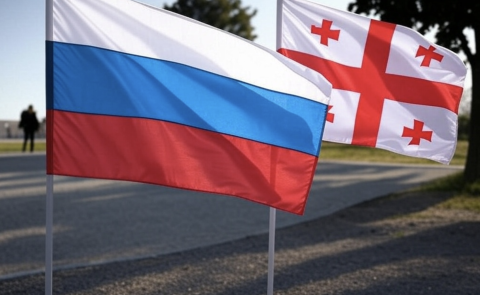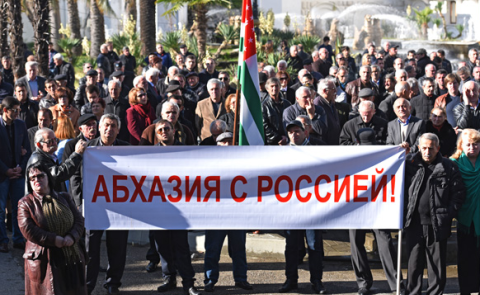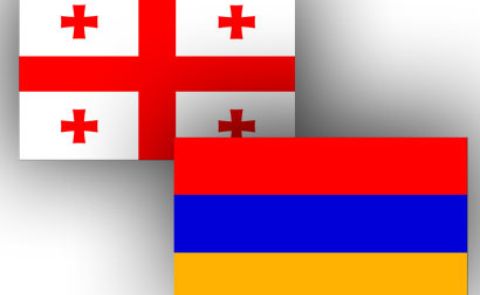
Armenia's CSTO Dilemma: A Forced Alliance?

2024 marks the year when the relationship between Armenia and the Collective Security Treaty Organization (CSTO) has become increasingly complex, influenced by Armenia’s evolving security needs and geopolitical dynamics. Armenia’s crisis with the CSTO appears rooted in a combination of disillusionment with the organization’s efficacy and suspicion of the true intentions of some of its members, as new evidence emerged about the support to Azerbaijan by some member states before and after the war for Karabakh.
Domestic Security: From the Warsaw Pact to the CSTO
The Collective Security Treaty Organization was established in 2002, and Armenia is a founding member state. The Collective Security Treaty itself dates back to 1992, and it entered into force in 1994. The Treaty, which came first and the Organization later, effectively replaced the Warsaw Pact, the military organization of the former Soviet bloc plus the satellite states. Compared to the Warsaw Pact, the CSTO has only 6 member states, namely, Russia, Belarus, Armenia, and the three Asian countries - Kazakhstan, Kyrgyzstan, and Tajikistan. Similar to NATO, the CSTO serves a defensive role against attacks by non-member states, rather than addressing issues of public order or security within member states. Despite this requirement, the CSTO has only deployed once, in Kazakhstan in 2022, to quell local riots, not for the purpose of military defense against a third country attack but to police within a member country. This aligns with the Warsaw Pact's operational model, which saw its only deployment in 1968 in Prague.
Despite the unrest in Kyrgyzstan in 2010; the border clashes between Afghanistan and Tajikistan in 2015; and most notably, the Armenian-Azerbaijani cross-border clashes from 2021 to 2024, the organization has not operated for 30 years. Since its establishment, CSTO has never enforced the territorial integrity of member states. This also applies to Russia, which is currently facing a trans-border security crisis with advancing Ukrainian troops in the Kursk oblast at the time of writing. Armenia had different expectations about the role the security organization should have played in its defence, hoping the CSTO would shield the country from any possible aggression.
With Nikol Pashinyan’s rise to power, relations between the CSTO and Armenia reached an all-time low. In 2018, when the new government in Yerevan was investigating the post-election repression of 2008, the General Secretary of the CSTO, the Armenian, Yuri Khachaturov, ended up on trial, effectively decapitating the CSTO. Frictions emerged with Moscow and with the Organization. During the 2016 clashes in Karabakh, the CSTO remained silent, and Kazakhstan, a member state of the organization, even declined to host a meeting in Yerevan that year due to the country's perceived "unsafe" status. Again, at the height of the fighting, in October 2020, Pashinyan allegedly put it on paper to Vladimir Putin that the fighting concerned Armenia de jure, not just Karabakh, and that it was therefore the CSTO’s competence to intervene. The response instead came from the Russian Foreign Ministry, which had recalled the 1997 Russian-Armenian agreement on mutual collaboration and protection, in case of need.
In short, for Armenia, the CSTO did not exist, neither at the height of the war nor afterwards, when the cross-border territorial claims began due to the lack of delimitation and demarcation of the border with Azerbaijan in the years of 2021-2023.This prompted Yerevan to reassess the plausibility of keeping the membership.
Freezing in Winter
The terms of the Armenian-CSTO crisis were quite unclear earlier this year, until February 2024. The discourse till February revolved around the broader geopolitical tensions influencing Armenia’s foreign policy. The country was and is still navigating a challenging landscape where it must balance traditional alliances, particularly with Russia and the CSTO, against emerging security partnerships. The Armenian leadership’s approach underscored a strategic recalibration, seeking to maintain sovereignty and address national security concerns while managing the complexities of its relationships with major international players. This balancing act was and still is critical as Armenia faces internal and external pressures, highlighting the evolving nature of its foreign policy and security strategy.
In an interview in January, Viktor Vasilyev, the Russian Foreign Ministry’s Ambassador-at-Large for CSTO, alleged Western attempts to exploit the situation in Armenia to destabilize the region, stressing that Armenia’s security, especially in military-technical fields, heavily relies on CSTO cooperation. Vasilyev suggested that the Armenian leadership’s sporadic engagement with the CSTO might be influenced by Western pressure and internal emotions. He expressed hope for a reasoned approach to prevail in Armenia’s policy decisions, noting Armenia’s withdrawal from the organization was not being considered.
But in mid-February, Armenian Prime Minister Nikol Pashinyan provided a further insight into the country’s shifting security alliances during an interview. He openly described Armenian membership in the CSTO as frozen. Pashinyan clarified that Armenia did not intend to counter Russia with its efforts to diversify its military cooperation with countries like the United States, France, India, and the European Union. Instead, these efforts reflected Armenia’s assessment that its existing security arrangements, particularly within the CSTO, did not fully meet its needs. He reiterated that NATO membership was not being considered, although Armenia maintains a relationship with the alliance through formats such as the Individual Partnership Action Plan.
In response to Pashinyan’s remarks, Kremlin spokesman Dmitry Peskov expressed uncertainty about Armenia’s position within the CSTO. Peskov pointed out that the CSTO's framework did not formally recognize Pashinyan's implied concept of “freezing” Armenia's CSTO membership. He indicated that the Russian Federation was seeking clarification from Armenia to better understand its position and future intentions regarding the alliance.
Spring’s Tempests
The growing crisis between Armenia and the CSTO has been marked by Armenia’s decision to suspend its financial contributions to the organization. This decision was confirmed by Ani Badalyan, spokesperson for Armenia’s Foreign Ministry, who stated that Yerevan would not participate in the CSTO’s financing for 2024, despite not opposing the decision made in a limited format by the other member states.In response to Armenia’s decision, Russia’s Deputy Foreign Minister Alexander Pankin sought to downplay the severity of the situation, asserting that the CSTO would continue to function despite Armenia’s financial withdrawal. He noted that while delays in financial contributions had occurred before within the CSTO, the organization’s military-political cohesion was more critical, underscoring that Armenia remains a member of the CSTO and has not indicated a desire to leave the organization.
In such a situation, with Yerevan unwilling to hide its disaffection towards the CSTO on one side and the organization on the other trying to downplay the severity of the crisis, Belarusian President Alexander Lukashenko was to play the fire starter. While visiting Azerbaijan, the Belarusian president, during a joint press conference with Azerbaijani President Ilham Aliyev, recalled how he had discussed with the Azerbaijani President the issue of the return of displaced Azerbaijanis after the clearly already planned war.
His words caused a tempest in Armenia. Pashinyan responded to remarks revealing his long-held concerns that certain CSTO member states had a role in preparing for the war against Armenia. He suggested that these countries aimed not merely at resolving the Nagorno-Karabakh issue but at undermining Armenia’s sovereignty. Pashinyan’s statements highlighted a significant trust deficit within the CSTO. He accused some CSTO countries of pretending to assist Armenia while actually supporting actions that compromised its security. This perception has been reinforced by leaks revealing the extent to which CSTO member states have armed Azerbaijan, as well as the growing Russian-Azerbaijani partnership, which transformed into a strategic alliance in 2022.
In light of four years of escalating disagreements, the consequences were not totally unpredictable: Yerevan started to openly consider the option of leaving the CSTO. Asked during a question-time session in Parliament to comment on Armenia’s possible withdrawal from the organization, the Prime Minister openly assessed: “This is a bubble union whose members did not help Armenia against Azerbaijan. […] It turned out that members of the Alliance were not fulfilling their contractual obligations, but were helping Azerbaijan prepare a war against us. […] We will leave. We will decide for ourselves when to leave. We are talking about it.”
Lukashenko's remarks also had a chilling effect on Armenia-Belarus relations. Pashinyan told the National Assembly that he will never travel to Belarus again. ”Lukashenko, one of the CSTO countries' leaders, declared that he participated in the preparation for the 44-day war and encouraged, believed, and desired Azerbaijan's victory.” He rhetorically added: “After that, do you think I could go together with the head of Belarus in the CSTO format to discuss something? […] However, I state that, from now on, I will never go to Belarus again. As long as Belarus has Alexander Lukashenko as its p resident. And in general, I declare that from now on, not a single official representative of Armenia will go to Belarus. Not a single one. […] As far as our membership in the CSTO is concerned, I cannot exclude anything in theory. For example, if Belarus itself leaves the CSTO, or the President of Belarus makes words of apology and gives explanations to the people of Armenia, that will be acceptable to the people of Armenia.”
Risks and Threats: A Hot Summer
In March, the Chief of the General Staff of Armenia’s Armed Forces, Edvard Asryan, hinted at the sensitive nature of discussions surrounding a potential Armenian withdrawal from the CSTO, stating that the consequences of such a move were considered a “state secret.” Asryan’s refusal to elaborate on the issue or comment on Russian arms supplies to Armenia underscored the delicate nature of the situation.
By June, Russian officials, including Deputy Foreign Minister Mikhail Galuzin, had openly criticized Armenia’s apparent distance from the CSTO. Galuzin emphasized that Armenia’s full participation in the CSTO was crucial for maintaining peace and stability in the South Caucasus. He warned that Armenia’s pivot towards Western security partnerships, exemplified by inviting an EU monitoring mission instead of accepting CSTO assistance, was a strategic misstep. Armenian officials, however, have expressed frustration with Moscow’s stance, and they are not stepping back. Speaker of Armenia’s National Assembly, Alen Simonyan, urged Russian officials to cease what he described as threatening rhetoric. Simonyan criticized the ambiguity of the CSTO’s commitments to Armenia and rejected accusations of Armenian collusion with Western powers. He also dismissed claims that Armenia was negotiating with Western countries about strategic military alliances or sharing sensitive national security information.
Moscow’s narrative, articulated again by Galuzin in mid-June, accused the West of using Armenia as a pawn in a broader geopolitical strategy against Russia. Galuzin warned that Yerevan’s move towards NATO and EU would isolate Armenia from vital economic and security frameworks, such as the EAEU, where Armenia has significant economic ties, including record bilateral trade with Russia. He went as far as to say: “Further erosion of Armenia’s sovereignty in the security sphere and the transition to Western patterns under the ‘paper umbrella’ of the United States and NATO will simply make it impossible to maintain a single defence space with Russia and within the CSTO. […] We hope that the Armenian leadership will have enough political wisdom to understand the illusory nature of the promises made by the West and the critical importance of relations with Russia from the point of view of the sovereignty, security, and economic development of the republic”.
Summer has come to an end and Armenia seems stuck in a very uncomfortable position. Its current “frozen membership” in the CSTO is not making anyone happy. Yerevan made a lot of fuss about leaving the organization, but it’s not that straightforward to take such a step without having a valuable alternative or at least a strong negotiating position. Currently, neither of the two options appear to be nearing completion. Moscow is vocal about its disappointment, using threats and Yerevan is expected to resume its cooperation with the CSTO without any prerequisites. All the other members of the organization use conciliatory words, but they are basically keeping a low profile in a game that is played by two very unequal players.
Contributed by Dr. Marilisa Lorusso
See Also


3+3 Initiative as a New Order in the South Caucasus

Economic Cooperation Between Armenia and Georgia: Potential and Challenges Ahead

Russia and Occupied Abkhazia: A New Type of Relations

Georgia and US: From Close Ties to Caution

